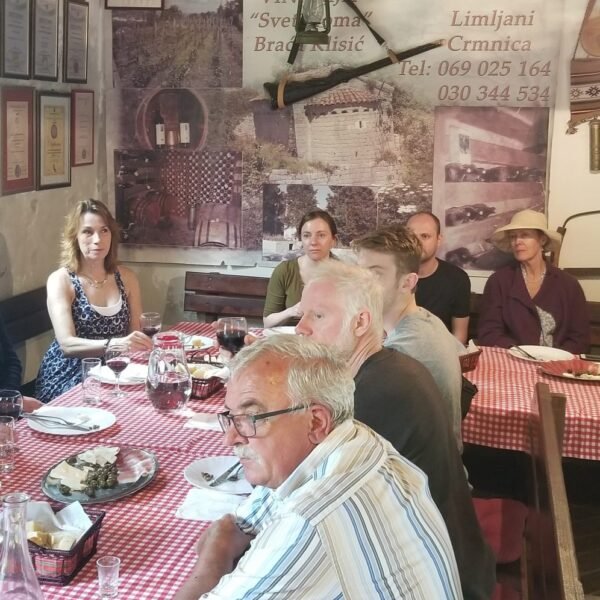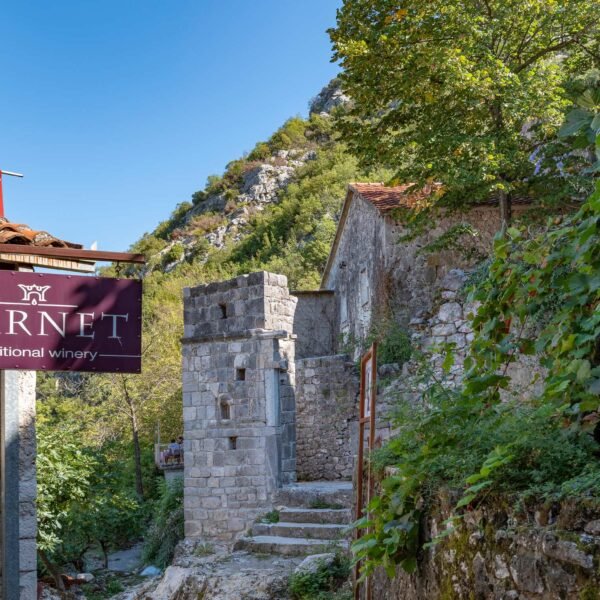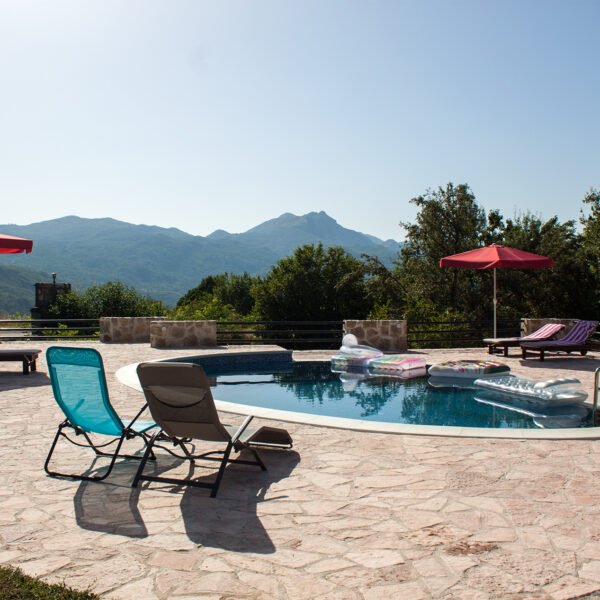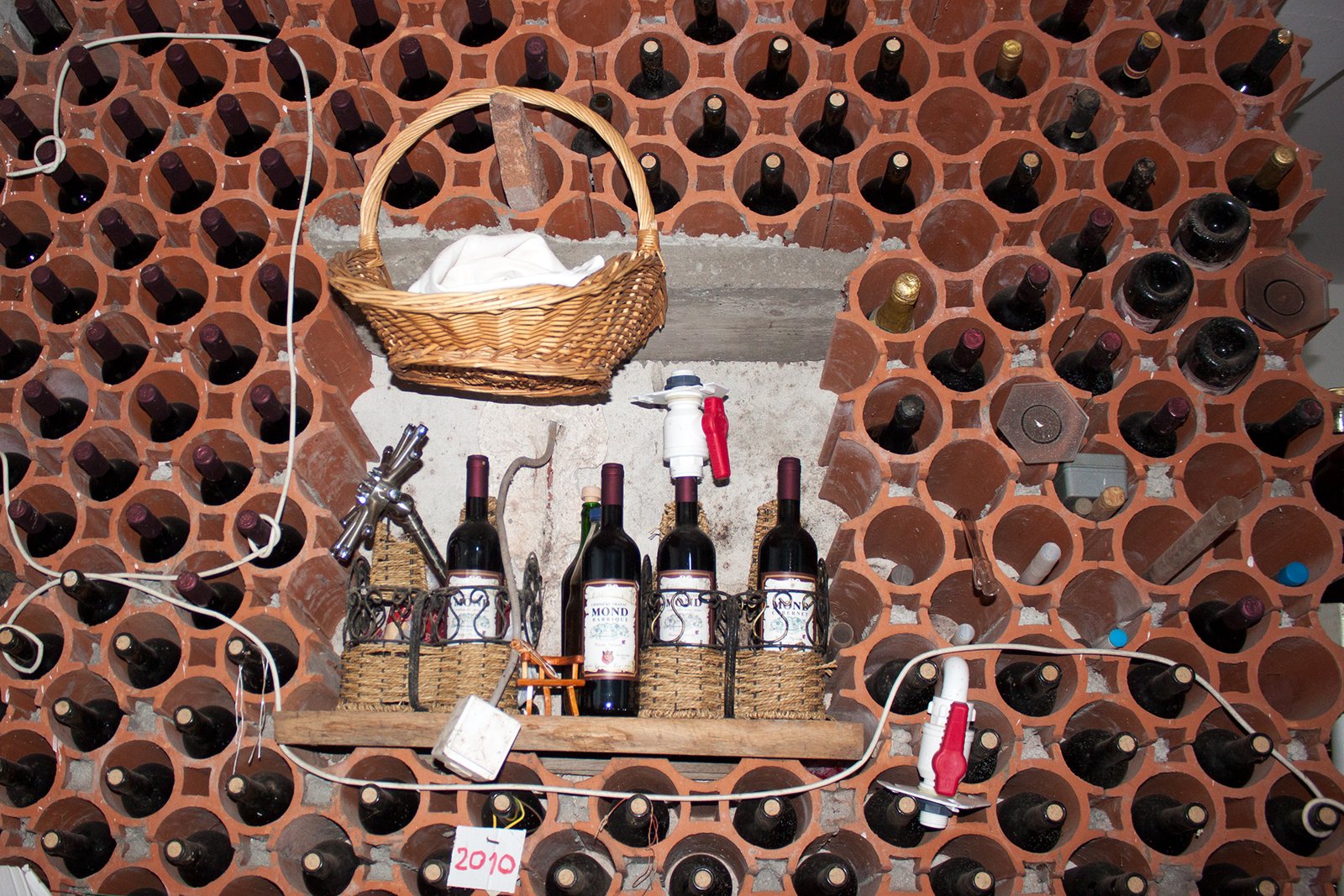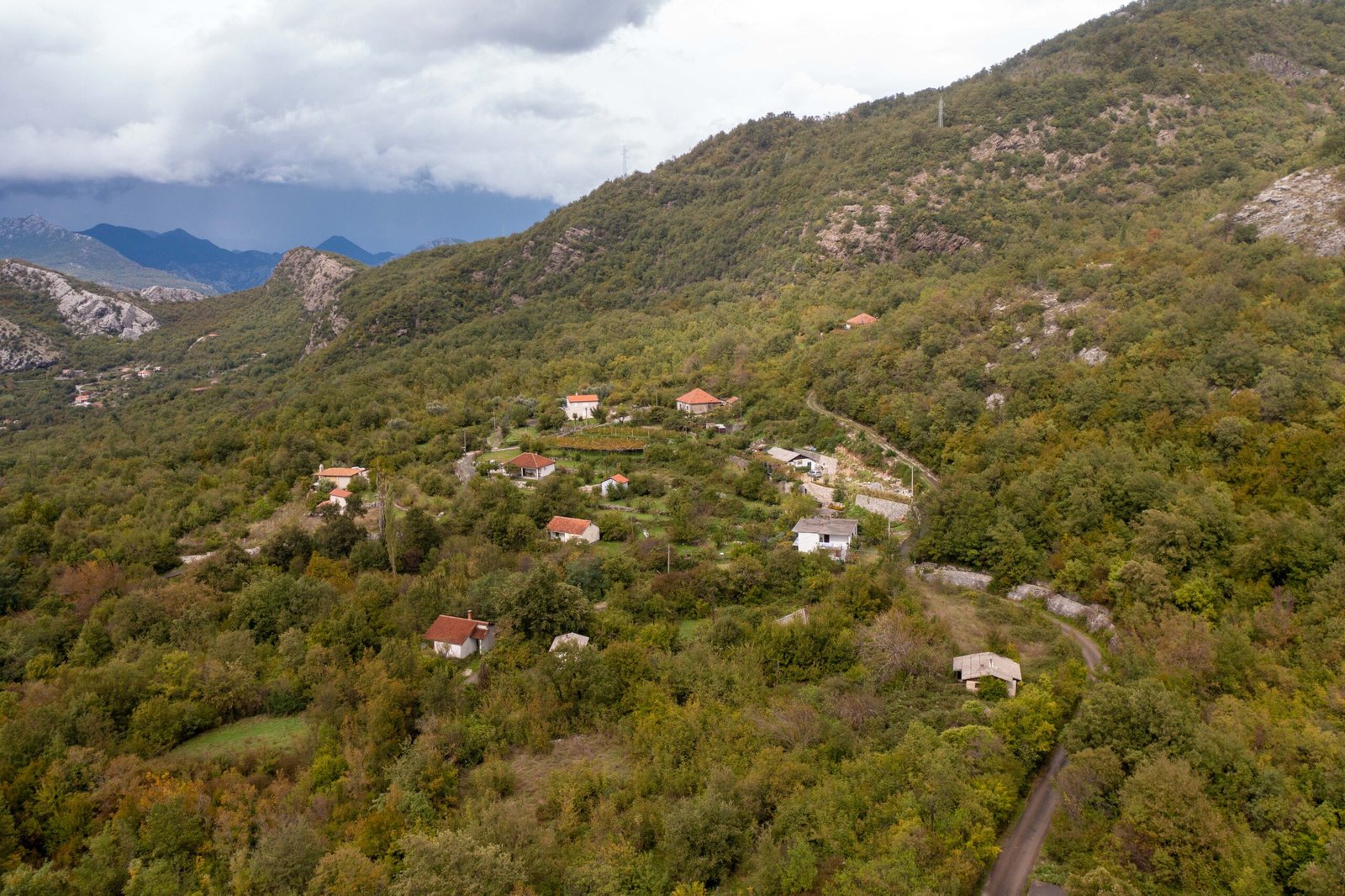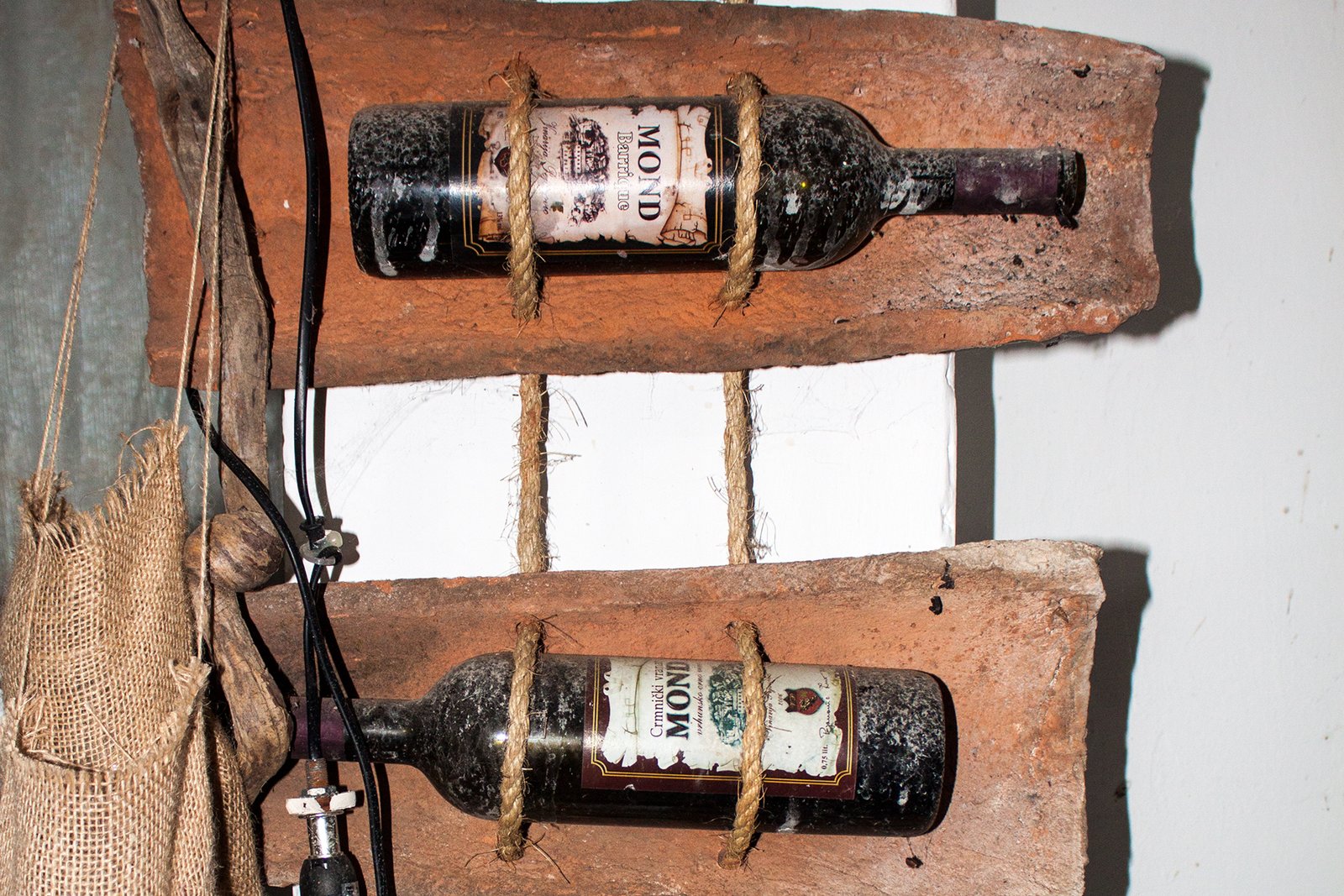A VILLAGE OF WINE, TRADITION, AND BREATHTAKING VIEWS
At the foot of the mighty Sutorman, where the Limštica River winds through the fertile valleys of Crmnica, lies the village of Limljani – a place whose beauty, history, and hospitality captivate at first sight. Limljani was first mentioned in 1296, in a charter of King Milutin as a gift to the Monastery of St. Nicholas on Vranjina, and again in 1482 by Ivan Crnojević in a charter to the monastery in Cetinje. During the reign of King Nikola, the village thrived – in 1888, the Vir–Bar road was built, still in use today.
Limljani is a gem of Crmnica, a region famous for vineyards and the native Vranac grape, cultivated here since ancient times. Vineyards stretch across terraces rising up to 700 meters above sea level, where the sun, fertile soil, and pure water give the grapes their specific aroma and rich taste. Family-owned wineries, preserving centuries-old wine-making traditions, offer authentic tasting experiences in cool stone cellars, often accompanied by tales of ancestors and old customs.
But Limljani is more than just wine – it is also a land of flavor. Taste the cheese scented with mountain herbs, homemade prosciutto, olives from centuries-old groves, fresh and dried figs, pomegranates, mandarins, walnuts, Japanese persimmons, and even the exotic jujube fruit. All of this, paired with a sip of local wine or brandy, turns every meal into a cultural experience. In Limljani, food is more than sustenance – it’s a way of life.
Be sure to visit the churches of St. Thomas, St. John the Baptist, St. Petka, and St. Roman – each holds its own story, carved in stone and memory. The village cemetery, surrounded by greenery and silence, preserves the spirit of the past and the identity of this land.
The traditional architecture blends seamlessly with nature: stone houses with vaulted arches, threshing floors, dry-stone walls, and terraces following the mountain slope. This makes the village a dream for photographers, history lovers, and anyone seeking authenticity and peace.
Limljani is also a key point on the panoramic route “Between Two Magical Shores,” connecting the Adriatic coast to Lake Skadar. Along this day-long journey, you’ll encounter ancient olive groves, vineyards, chestnut forests, cultural landmarks, and breathtaking viewpoints. Every turn reveals a new story, a new face of Montenegro.
Coming to Limljani means experiencing the spirit of the south: the scent of the earth after rain, the taste of grapes in your hand, and the sound of footsteps on ancient stone paths. This village is not just a destination – it’s a feeling, a place where nature and people have lived in harmony for centuries. Take a piece of Limljani with you – in your heart, in your memories, and of course, in a bottle of fine wine.
You are standing opposite the old train station in Limljani, on the former railway route from Bar to Virpazar. It was the very first railway line built by the State of Montenegro. Today, only the station building remains in Limljani — and a fond story about the train called “Ćiro.”
Back in 1908, during the first ceremonial ride in Bar, two kings were present: Nikola I Petrović and Vittorio Emanuele III of Italy. The railway, used for both passengers and goods, was built by the Italian company Compagnia di Antivari under contract with Montenegro. Its total length was 43 kilometers and 30 meters.
From that year until 1959, the train “Ćiro” ran through Limljani — the tracks once passed right here. The journey from Virpazar to Bar would take two to four hours, depending on the season. The locomotive was weak, so passengers often had to get off to help it move uphill.
The train climbed slowly, struggling toward a tunnel cutting through Sutorman, which was 1968 meters long. The tunnel still exists, but it’s no longer accessible, as it hasn’t been maintained. Its construction was the greatest engineering feat in Montenegro at the time, a challenge for both tools and workers.
“Ćiro” has been preserved and can still be seen today at the train stations in Bar and Podgorica, a reminder of a different era, the romance of travel, and the spirit of innovation of that time.
THE RACE WITH ĆIRO
Kićo Milić from Limljani once bet he could outrun the train. He ran beside the locomotive between two stations — and won the prize. Ćiro could not go faster than 25 km/h.
LIMLJANI IN THE GUINNESS BOOK
Why is Limljani in the Guinness Book? Because of this railway — with 5 stations and 2 stops. Nowhere else in the world did a train have five official stops in a single village.
SHORT FILM “SMALL TRAIN”
If this story intrigued you, check out the old short film Small Train on YouTube, featuring artistic shots by Dario Bremec, music by Bojan Adamič, and a script by Puriša Đorđević.
TRACES OF THE TETHYS OCEAN
While enjoying the beauty of the Skadar Lake basin and the village of Limljani, few realize that this region preserves traces of the ancient Tethys Ocean. Before Tethys, Earth had one continent—Pangaea—and one ocean—Panthalassa. Around 440 million years ago, massive tectonic shifts divided Pangaea into Laurasia (Europe, Asia, North America) and Gondwana (South America, Africa, Australia, Antarctica, India), forming the Tethys Ocean, which covered the Balkan region and parts of Europe. Today, remnants of Tethys still exist in the Mediterranean, Black, Azov, and Caspian Seas, shaped by a warm, humid, subtropical climate.
TRACES OF DEPOSIT FEEDERS
Around 250 million years ago, Limljani was part of the shallow Tethys waters, rich with marine life. Corals, shellfish, sea urchins—and deposit feeders, resembling small worms about ten centimeters long—thrived here. These creatures burrowed through the seabed, consuming sediment and extracting nutrients. Their activity disrupted the natural layering of ocean deposits—a process known in geology as bioturbation. Their ancient burrows remain preserved in limestones and marls, forming 120-meter-thick layers visible today in Limljani.
CRMNICA CONGLOMERATES
During the Middle Triassic, around 240 million years ago, Crmnica was part of Tethys’ deep-sea zone. A massive river from the mainland deposited gravel and sand, creating a delta. These sediments traveled up to 10 kilometers underwater, eventually settling in the deep ocean. Over millions of years, they hardened into conglomerate rock. These 60-meter-thick layers, known as the Crmnica Conglomerates, contain fossils such as Spiriferina, Rhynchonella, Encrinus, and Ceratites.
SUTORMAN – THE FOLDED OCEAN FLOOR
Sutorman Mountain holds rock formations that reveal the story of the ancient Tethys lagoon—a shallow, turquoise paradise filled with corals, algae, and shellfish. Over time, the limestone formed under calm waters. But then, a powerful underwater volcanic eruption altered everything. The ocean floor folded and rose, transforming the landscape. Though Tethys disappeared, its fossils and rock layers remain—telling the story of an ocean that once covered Montenegro.
This historical account of the cemetery church in the village of Limljani, built through the effort, faith, and unity of the locals, reflects the spirit of Montenegro in the second half of the 19th century. A testimony of the consecration of the Church of Saint John the Baptist was recorded in the Montenegrin press of the time.
In issue 48 of the newspaper Glas Crnogorca, from Sunday, December 8, 1885, it states:
“As is well known, the people of Crmnica are very religious, especially those in Limljani, and in 1874 they began construction of a new, magnificent church. The people built this temple so beautifully that it can be compared to the finest churches in Montenegro. His Highness, Prince Nikola I, donated over 300 florins in gold. The church was built on the initiative of the zealous parish priest, Mr. Savo Klisić.”
The church was built by the hands of the villagers themselves, who carried stone from nearby hills, often on foot, kilometers away. It was built in honor of Saint John the Baptist and over time became not only a sanctuary but a symbol of village unity.
The formal consecration of the church was held on December 1, 1885. The Most Reverend Metropolitan Mitrofan Ban personally came from Cetinje to lead the service.
“After the divine liturgy, the large crowd welcomed the metropolitan in front of the church, to greet him. On behalf of the locals, teacher Jovan Vujanović stepped forward and delivered a speech filled with patriotism and faith. He concluded with the words: ‘Long live our gracious Ruler Prince Nikola. Long live!’ To which the people responded: ‘Long live! Long live! Long live!’”
After the service, the people of Limljani gathered around the church in a great folk dance. Songs were sung late into the night, with music, laughter, and prayer. It was a day still told in stories – a day when Limljani was lit up by faith, hope, and unity.
THE MIRACLE OF THE CHURCH OF SAINT THOMAS
On the slopes of the village of Limljani, near Bar, stands a small single-nave church dedicated to Saint Thomas, belonging to the Klisić brotherhood. According to locals, this sacred site is more than 12 centuries old. Though modest in size, the church has withstood incredible natural disasters over the centuries and still stands today as a symbol of faith, endurance, and the deep roots of tradition.
THE LANDSLIDE OF 1896
Originally, the church stood 150 meters uphill, to the left of the road. But in February 1896, after forty days of relentless rain, the ground in the center of the village shifted. A massive landslide destroyed all the homes of the Klisić brotherhood—except the church. As the story goes, the entire plateau with the Church of Saint Thomas slid downhill, intact. During the movement, the church rotated 45 degrees and now faces northwest–southeast. It remains tilted at a 17-degree angle—a sight that continues to amaze visitors.
THE EARTHQUAKE OF 1979
Limljani suffered greatly in the devastating 1979 earthquake. Nearly all old houses were destroyed, and lives were lost. Yet, the Church of Saint Thomas stood strong. It was damaged, but not destroyed. The Klisić brotherhood, deeply connected to their holy site, restored the church’s interior, preserving it once more as a symbol of survival.
FAMILY SAINT’S DAY
The Klisić family celebrates St. John’s Day, October 6, as their patron saint’s day—a date marking the family’s conversion from paganism to Christianity. On this day, all homes are open to guests, with tables full of traditional food and drink. This hospitality, faith, and respect for ancestors are the spirit that keeps this place alive, just like the church that has endured for centuries.
Sutorman is part of the coastal mountain range belonging to the Rumija massif. It lies between Paštrovska Gora and Rumija itself, separated by the Sutorman Pass (805 m), which also divides the Bar coastline from the Crmnica plain.
Its slopes stretch in different directions – southeast toward the Bar field, southwest toward Sutomore and Petrovac, and north toward Limljani and the wider Crmnica area. The highest peak is Vrsuta (1183 m), a rocky plateau offering stunning panoramic views – from the Adriatic Sea, across Lovćen and Katunska nahija, all the way to the distant Prokletije.
On its slopes lies the well-known Karuči viewpoint, overlooking Crmnica, Lovćen and surrounding villages. In the past, the famous “Ćiro” train passed through here, connecting the coast to the inland.
The mountain is famous for its springs. According to legend, there are 365 of them – one for each day of the year. The village of Limljani, at the foot of the mountain, has always been known for clean springs, rivers, and old watermills. Each brotherhood once had its own spring, many of which still flow today.
Vrsuta is a true natural jewel. Four types of internationally important habitats have been recorded here: Mediterranean dry grasslands, beech and oak-hornbeam forests, and limestone cliffs with unique vegetation. Over 500 plant taxa grow here, 57 of which are endemic.
Three rare species stand out: Gymnospermium scipetarum, an Illyrian endemic found only here in Montenegro; Tulipa grisebachiana, the only tulip species in the Montenegrin flora, with its largest population on Vrsuta; and Edraianthus wettsteini, a bellflower found only in the Rumija massif – with Vrsuta marking the lowest point (860 m) of its known range.
Thanks to its beauty, legends, and rich biodiversity, Sutorman is an ideal destination for those seeking adventure, silence, and a true connection with nature.
*Listed are rural households that are members of our association and are featured on this site.
Others:
Aleksandar Sjekloća
Tel: +382 69 020 285, +382 67 258 815
Ivo Pejanović
Tel: +382 69 468 008
Ilija Klisić
Tel: +382 69 025 164
Dragan Pejanović
Tel: +382 67 631 011
Momo Vulićević
Tel: +382 68 251 047
Mirjana Pejanović
Tel: +382 68 896 329
Vesna Klisić
Tel: +382 69 410 205
Mladen Kapa
Tel: +382 69 421 996
Petar Rolović
Tel: +382 63 285 718
Elena Sjekloća
Tel: +382 69 596 225
Neda Ivanović
Tel: +382 69 039 200
Rajka Sjekloća
Tel: +382 68 634 415
Pepa Dragišić
Tel: +382 67 112 146
PHOTOGRAPHY
Villages Included in the Project
Project
The Regional Development Agency for Bjelasica, Komovi, and Prokletije (RRA BKP), in collaboration with its partners—the Municipality of Peć (Kosovo) and the Regional Development Agency WEST (Kosovo)—implemented the project “Turning Our Villages into Tourist Destinations” under the IPA II Cross-Border Cooperation Program Montenegro – Kosovo 2014–2020.
Through this project, selected villages in the regions of Plav, Andrijevica, Berane, Bijelo Polje, Mojkovac, and Bar saw improvements in tourist infrastructure. The initiative established thematic rural trails linking natural and cultural attractions, installed signage, information boards, and markers for villages and locations, and supported certain rural households in enhancing their conditions for offering tourism services. As a result of the project, a joint promotional brochure was created, incorporating new thematic rural routes and local offerings, along with promotional video material.
Additional information about the village
TOURIST ORGANISATION BAR
+382 30 311 633
info@bar.travel
TIB VIRPAZAR
+382 69 091 337
tib.virpazar@bar.travel


